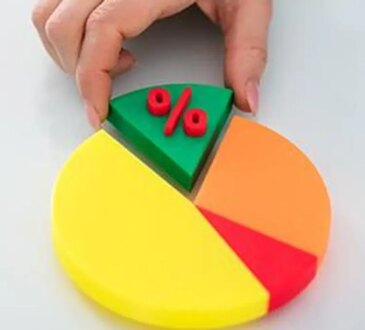
For many investors, the upcoming Sept. 30 deadline for U.S. lawmakers’ action on federal funding, and a potential partial government…
For many investors, the upcoming Sept. 30 deadline for U.S. lawmakers’ action on federal funding, and a potential partial government shutdown, feels something like a looming disruption to the electrical grid. But history shows that government shutdowns are often more like a short-term flicker than a long-term blackout.
“A government shutdown should be regarded as a short-term political disruption that likely should not impact an investor’s long-term financial plan,” comments Matt Miskin, co-chief investment strategist for Manulife John Hancock Investments. Miskin adds, “A well-diversified portfolio designed for wealth preservation should remain steadfast and avoid impulsive decisions based on short-term political events.”
[Sign up for stock news with our Invested newsletter.]
Here’s what you need to know about how markets have historically reacted to government shutdowns, what the risks are and how to stay on track with your financial plan when Washington gridlock takes center stage:
— Duration of past government shutdowns.
— Market resilience during shutdowns.
— Investor strategies during a shutdown.
Duration of Past Government Shutdowns
Since 1976, there have been 21 government shutdowns of varying lengths. While most have lasted less than 10 days, the longest shutdown stretched for 35 days, from Dec. 21, 2018, to Jan. 25, 2019, according to data from Vanguard.
These interruptions happen when Congress fails to pass appropriations bills or continuing resolutions to fund federal agencies. During a shutdown, some government services may pause, federal employees may be furloughed and market participants often brace for volatility.
[Read: 10 of the Best Stocks to Buy This Year.]
Market Resilience During Shutdowns
Still, history suggests that shutdowns rarely derail markets for long:
— Since 1976, during the days of government shutdowns, the S&P 500 declined nine times, ranging from -0.3% (1986) to -4.4% (1979), according to Vanguard.
— During the same time period, the S&P 500 notched positive returns 11 times, ranging from +0.1% (1984, 1996) to +9.3% (2019), Vanguard reports.
— Better still, based on data from Yahoo, the S&P 500 has yielded positive annual returns 74% of the time from 1979 to 2019. That’s an average annual return of +8.85% throughout the last 21 government shutdowns.
“Political divisions in Washington have made the threat of government shutdowns more common in recent years. Although this is not an ideal practice and a prolonged shutdown could have broader short-term market and economic effects, what’s most important is that investors remain disciplined, diversified and patient during such an event,” notes Vanguard.
Investor Strategies During a Shutdown
Government shutdowns may grab headlines, but they rarely justify portfolio moves. Here are a few strategies to consider during periods of government shutdown:
— Pump the brakes. There’s no need for abrupt investment changes during a government shutdown. Again, since 1976, government shutdowns have typically been resolved within a couple of weeks. That’s a short period in which to make big decisions about your long-term investment strategies.
— Stay diversified. Broad diversification among several asset classes can help cushion against volatility from political events.
— Keep perspective. Fundamentals like earnings, interest rates and inflation matter far more in terms of long-term market performance than short-lived headlines.
— Watch sector exposure. Be mindful of holdings in industries reliant on government spending or regulation, like defense contractors, aerospace and industrial companies, where delays may have short-term effects.
“Investors should consider liquidity needs as a broader financial plan but should likely avoid changes to their asset allocation just because of a potential government shutdown,” Miskin suggests. “If anything, market volatility during government shutdowns has presented buying opportunities for tactical investors aiming to capitalize on mispriced or oversold assets.”
Takeaway
While government shutdowns may dim the lights for a few days, they are unlikely to pull the plug on markets. The wisest strategy is to keep the power on in your long-term financial plan: Stay plugged into diversification, ground your portfolio in discipline and resist flipping the switch over short-term political noise.
More from U.S. News
7 Best Investments During a Recession
What’s the Best Portfolio Asset Allocation?
A Look Back at How Markets Have Performed After New Tariffs
Government Shutdown: In Case of ‘Emergency,’ Do Not Break Glass originally appeared on usnews.com
Update 09/26/25: This story was published at an earlier date and has been updated with new information.




